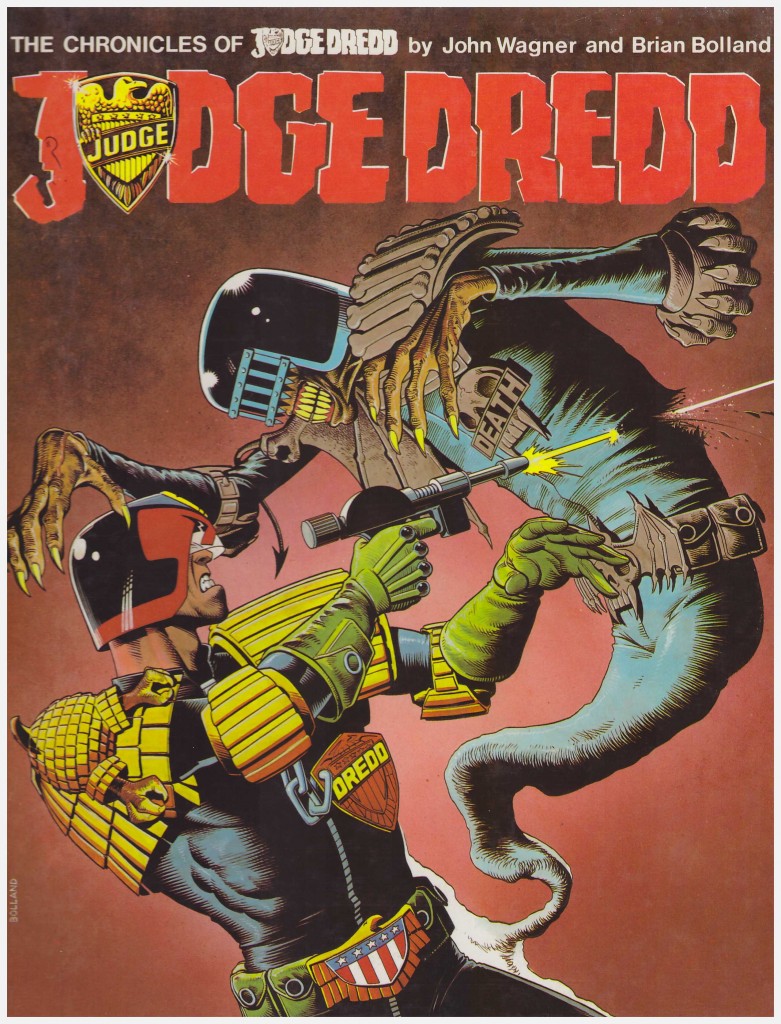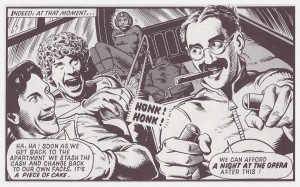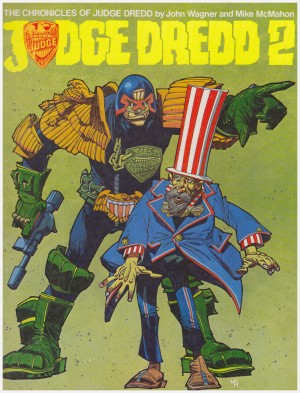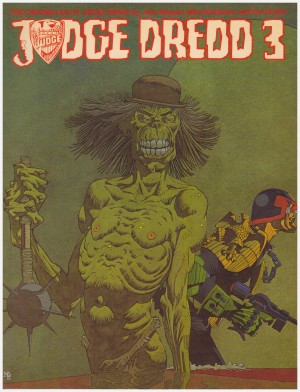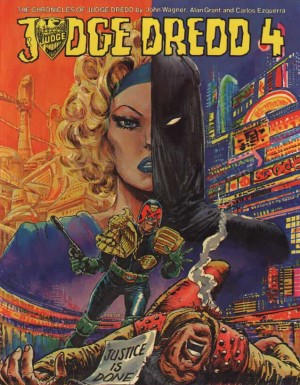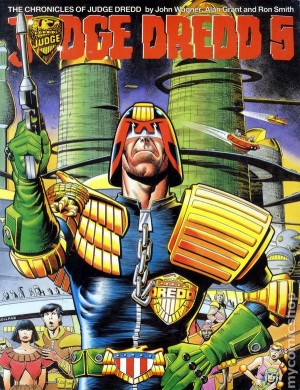Review by Frank Plowright
In 1981 graphic novels were in their infancy, and few considered a collection of strips from what was ostensibly a boy’s adventure comic to be any kind of commercial proposition. Nick Landau, though, had other ideas. He’d been an editor of 2000AD before opening the first Forbidden Planet store (with partners) and saw Judge Dredd’s popularity as being able to sell a well-produced collection. He was right, and Titan published their first book, although there were teething problems with the binding of the earliest paperback copies.
It was the first printing of Brian Bolland’s precise linework on pristine paper rather than the pulp distortions resulting from IPC’s printing process of the era. Better still is that over 30 years later the paper stock remains white.
Bolland was pretty much the finished article from his first published Dredd art, having developed his style pre-professional publication in fanzines. The stories in this volume display him learning to dispense with clutter, and he’s since adopted a few storytelling techniques, but the Brian Bolland who’s produced hundreds of DC covers in the last 20 years is essentially the same artist that drew these stories. Bolland arrived on Dredd during the character’s first year, and stayed with him until what’s now seen as a golden era of the early 1980s. The slightly bad news is that the majority of the content here pre-dates that era.
The book opens with the Judge Death’s first appearance. With an inventive and terrifying foe, the introduction of the first prominent female judge in Cassandra Anderson and Bolland’s clear art, it’s a bone-fide classic. Much of the remainder, however, is writer John Wagner, credited as John Howard, still finding his way with Dredd. The whimsy and satire aren’t fully developed, leaving attempts to portray Dredd as a straight action hero complete with Dirty Harry style quip at the conclusion, an interpretation that Wagner never fully embraced. The better strips point to Dredd’s future where fantastic gimmicks were a feature, and ‘The Face Changing Crimes’ lives up to the title. Bolland delivers likenesses of the Marx Brothers, Laurel and Hardy, Charlie Chaplin and Rondo Hatton, and ‘The Fog’ affords him the opportunity to define the staples of horror cinema.
Lest we forget, and we probably should, Dredd originally came with a comedy relief sidekick, Walter, the unctuous service droid with a speech defect. Incredibly, in the early days of 2000AD Walter was considered worthy of his own strip, and equally incredibly ‘Walter the Wobot’ was illustrated by Bolland. The sample one pagers included here should be enough for anyone.
When the first paperback edition sold out in three months there were numerous reprints, including a 1982 hardback edition in European album format. Bolland’s Dredd strips have been re-published on many occasions in many formats, but this book remains a bone-fide historical artefact.
